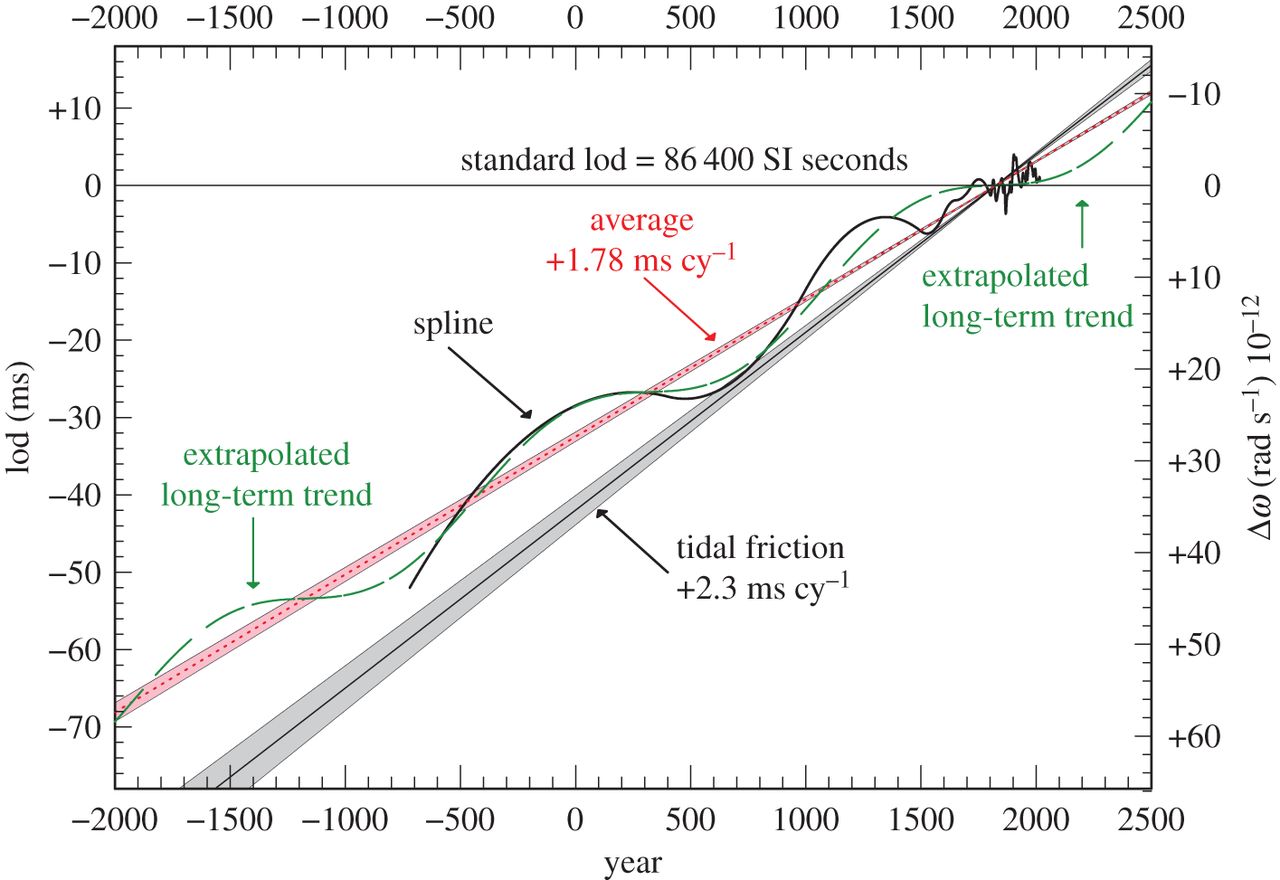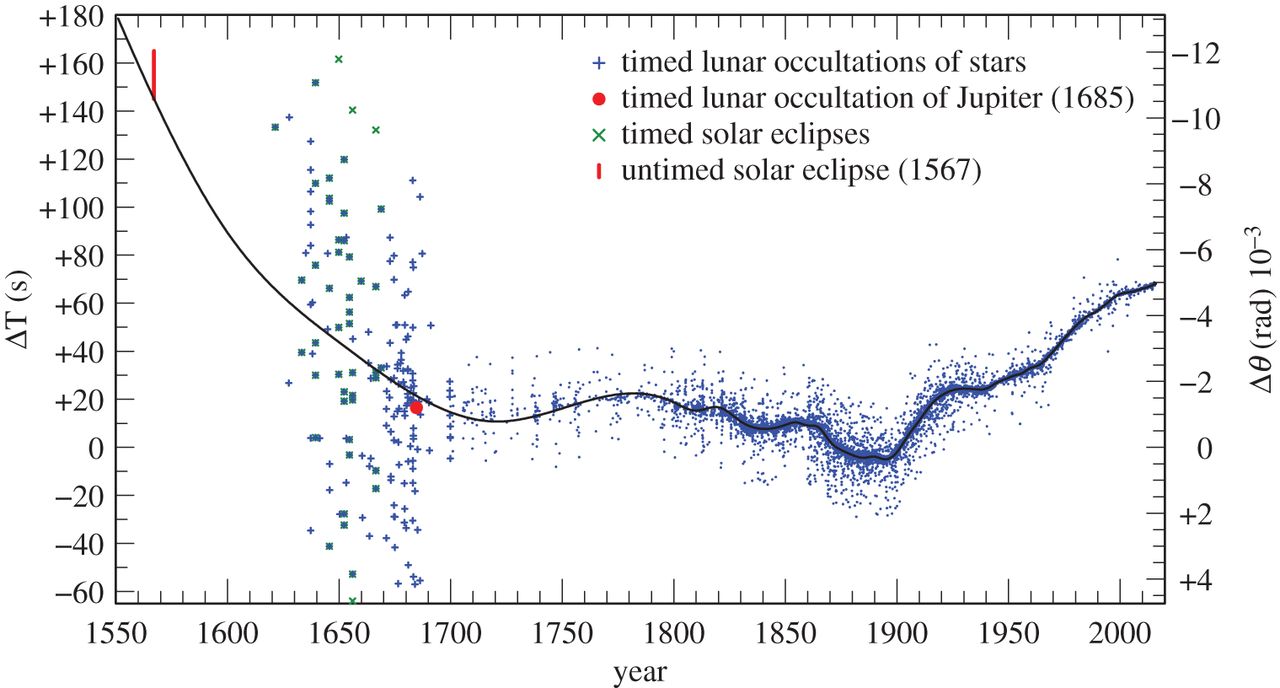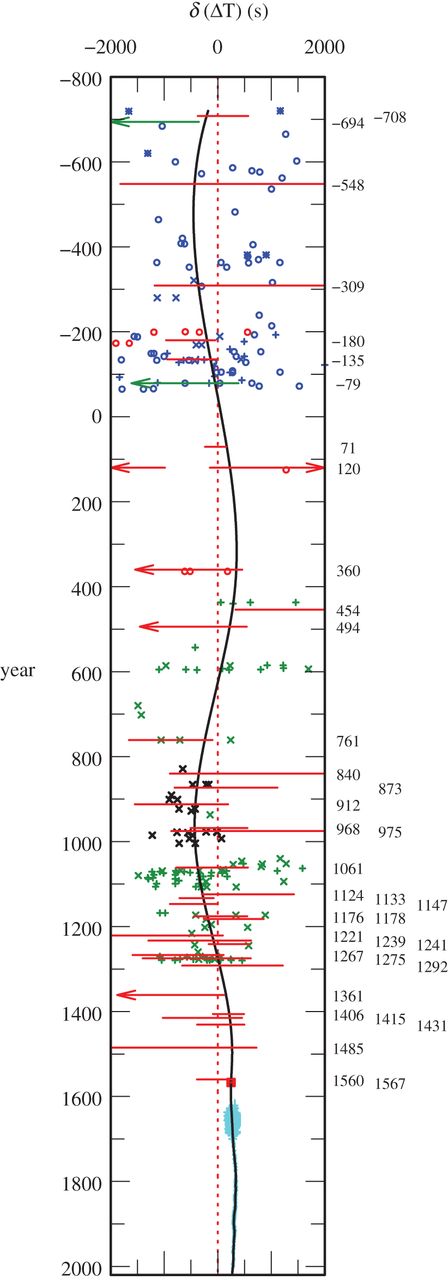Earth days increase on average by 1.78 ms per century

Average long-term slowing of the Earth’s rotation
In 1995, a pair of scientists from the University of Durham (Great Britain) and the Royal Maritime Almanac office carefully studied historical information on solar and lunar eclipses from 700 BC. in 1990, from Babylon, Ancient Greece, Arab dominions, Ancient China and Europe — all of these civilizations had advanced astronomy knowledge and recorded solar and lunar eclipses. The analysis of historical data in conjunction with modern information made it possible for the first time to draw up a schedule of long-term fluctuations in the rotation of our planet. The theory was confirmed that the Earth does not rotate at the same speed. It periodically accelerates and slows down, with a long-term tendency to slow down.
After 21 years, the same scientists have developed a revised historical graph of the rotation of the Earth. It includes new historical data: about 25% more information about solar eclipses from Babylon, as well as corrected data on eclipses from ancient China, which corrected inaccuracies due to interpretation errors. In addition, scientists have taken a new archive of lunar eclipses from 1623 to 2015 , which is based on the latest and most accurate ephemeris of the moon, the position of the stars and the contour of the moon during eclipses. Information received from NASA's Jet Propulsion Laboratory.
After updating the eclipse tables based on the results of historical records, scientists calculated the difference between the eclipse time in relative universal time (Universal Time, UT) and in absolute earth time (TT). Earth time is a modern astronomical standard developed by the International Astronomical Union for determining the time of astronomical observations made from the surface of the Earth. It is designed according to the gravitational model of the solar system and does not depend on actual changes in the speed of rotation of the Earth.
')
The delta time (ΔT) in the table and in the graphs corresponds to the difference between TT and UT. From the middle of 1955, when a high-precision atomic clock began to work on Earth, TT is defined as the time by atomic clock (TAI) plus 32.184 seconds. On a TT scale, one day is defined as 86,400 SI seconds. On the UT scale, one day corresponds to the average value of the solar day, based on the average period of the Earth’s orbit around its axis.
Current fluctuations in the speed of rotation of the Earth are accurately determined from information from satellites in Earth orbit and the relative position of the Earth and the Moon. Laser range finders made it possible to accurately calculate the tidal acceleration in the Earth-Moon system (n): this is −25.82 ± 0.03 ′ ′ cy −2 .

Accordingly, we can accurately calculate the theoretical dependence of the speed of rotation of the Earth on tidal acceleration.

Therefore, ΔT to change the rotation under the influence of tidal acceleration will change with time as a parabola:

In this formula, t corresponds to the Julian centuries after 1820.

It should be noted that due to the large mass of the moon (approximately 1/81 of the earth’s mass), the Earth-Moon system can be considered as a double planetary system, and not as a planet with a satellite.
Data from laser rangefinders on the Moon and information about tidal acceleration is available only for the last 50 years or so, but this formula is fully applicable to historical astronomical observations, because the system of the Earth and the Moon has not changed.
Scientists have tried to determine how other unknown factors, other than tidal acceleration, have influenced the speed of rotation of the Earth in past centuries.
Here is the diagram of the change in ΔT from the results of all observations up to 1600, more precisely, to the total solar eclipse of 1567.

Measurements after 1600 and even more so after 1700 using more sophisticated instruments (telescopes) significantly reduced the measurement error.
Here is the diagram of the change in ΔT according to the results of observations from 1623 to 2015.

If we use the above-mentioned parabola and present it in the form of a straight line, then the long-term fluctuations of the speed of rotation of the Earth form the following picture.

Scientists conclude that only tidal acceleration cannot explain fluctuations in the speed of rotation of the Earth. Obviously, other forces influence the rotation of the planet. For example, it may be a combination of glacioisostasis (vertical movements of the earth's surface) and the gravitational interaction of the core with the Earth’s mantle.
Based on the analysis of all historical data, it is possible to calculate the average long-term deceleration of the Earth’s rotation, which is approximately 1.78 milliseconds per century.
The scientific work and all the initial data in tabular form was published on December 7, 2016 in the journal Proceedings of the Royal Society in open access for further processing by astronomers and astrologers (representatives of this pseudoscience also prefer to use real scientific data).
Source: https://habr.com/ru/post/372959/
All Articles